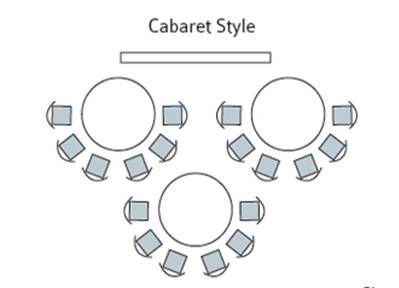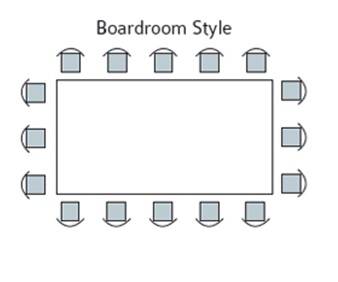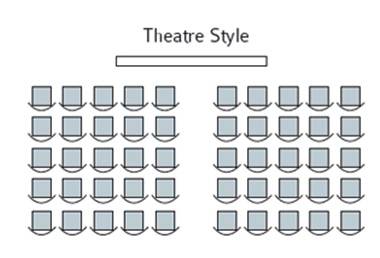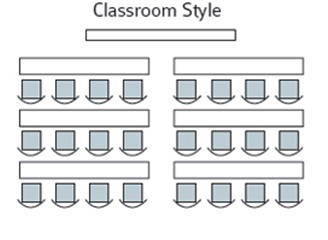Classroom Layout
How you set up your classroom is extremely important. You want to get the best out of the learning experience, so below are a few things for you to consider.
Setting up your room:
1. Environment
You need to create an environment that will make learners feel comfortable. It is a good idea to speak to the person who books the rooms in advance to let them know what you will require. Think about what you would like in a learning environment.
Examples of this could be:
- Readily available water
- Blinds on the windows in case of glare
- A room where you can adjust the heating/air conditioning
- A room with wheelchair access
- Flip chart and pens
- A projector/white board
- HDMI cable to connect your laptop, etc.
Please be aware that with all the planning in the world, you rarely get everything you want so be ready to adapt to any room that you get! 99 times of out 100, the room is not in the style you request!
2. Room layout
Depending on what kind of training you are delivering will depend on what kind of room layout will work best. There are lots of different ways that a room can be set out, each has its own advantages, however, you will find what works best for you. The styles below are different options for you to consider.
For any training that is interactive, cabaret style would be ideal.
The reasons for this is that you will be wanting your learners to partake in small group exercises using flip chart and pens. This style will allow for that kind of learning to take place. Every learner will be able to contribute, there will be plenty of space on the tables for writing and groups will already be split into the sizes that you want for your exercises.

For any training that is interactive, cabaret style would be ideal.
It is also a great layout for you to be able to walk around, listen to the group discussions, get involved where appropriate and sit down on a table with the learners if you need to.
Board room style can also work for interactive training, but isn’t as effective. With this style, some people will have their backs to the front, group work is more difficult, but the learners do have a desk to write on, you can put resources in the middle of the table and move around the room so that you can help and support any learners who need you.


Theatre style and classroom style are good for when you are imparting information. Learners can file in, listen to what you have to say, make notes and then file out again. You see these styles in University lecture theatres, but we would not recommend them for training where you want learners to do activities and get involved.

If you do arrive at a venue and there is no way that the room will accommodate the layout that you want, you will have to work with what you have!
Your learning environment is now set up and you are fully prepared. What you need to do next is get off to a great start!
My passion is for learning, any age, anywhere, anytime. That is why I offer Interactive E-learning, Face to Face training, Microsoft Teams/Zoom training and consultancy services. Learning should be easy to organise, and more importantly fun!
The world is moving so fast these days, especially where technology is concerned, everything is mobile, what would we do without our mobile phones and tablets? Learning takes place every day, whether it’s from an article we read, an app we download or a conversation we have going about our everyday lives. We are always learning and developing.
Author: Maxine Clark
Visit Maxine on LinkedIn
